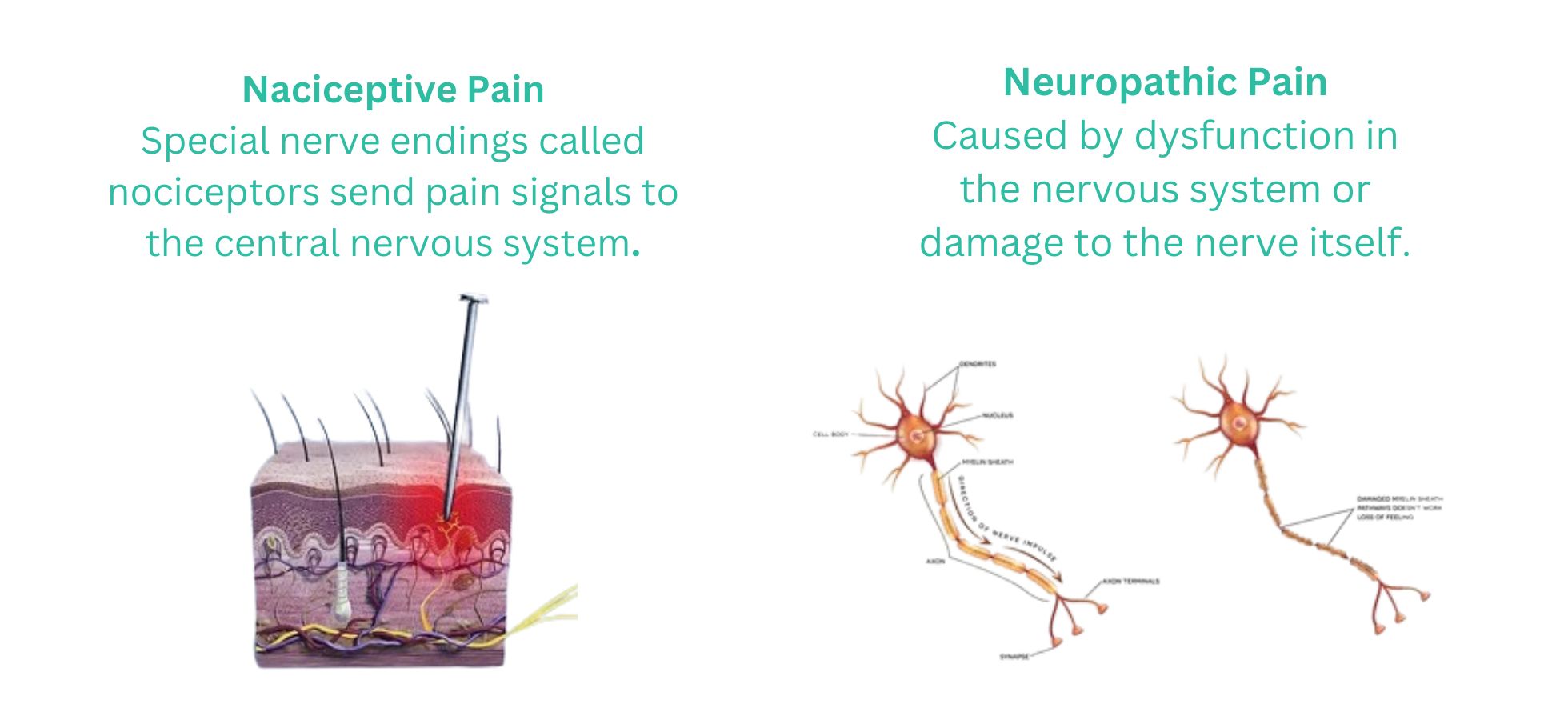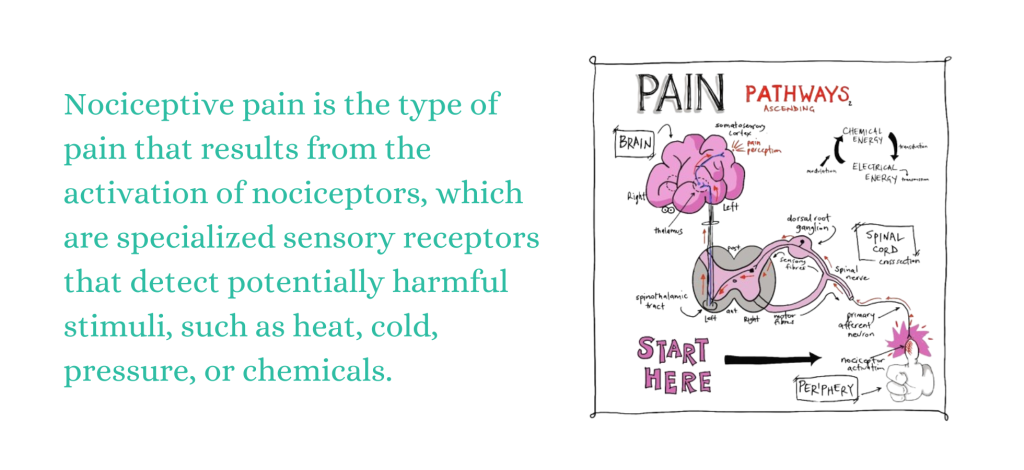Sorry, nothing in cart.
Nociceptive Pain Insights into the Body’s Warning Signals
- By admin
- |
- Uncategorized
- |
📣 Experiencing nociceptive pain in the body can be quite difficult. Continuation in any area can cause serious problems and a variety of difficulties. Numerous factors can trigger nociceptive pain, affecting different parts of the body.
📣 We should know what is nociceptive pain and how is it cured. What steps must we take to fix nociceptive pain?
📣 Certainly, there are quality medicines that can help you in this regard. We advise pills like the Aspadol 100 mg to provide you with quality relief.
Nociceptive Pain
Nociceptive pain is the most common type of physical pain caused by damage to body tissue. It’s often caused by an external injury, like stubbing your toe, sports injury, or a dental procedure. People frequently suffer nociceptive pain in the musculoskeletal system, which includes joints, muscles, skin, tendons, and bones. Chronic (long-term) or acute (short-term) nociceptive pain can interfere with your daily life and make it difficult to move, causing mobility issues.
There are two main types of pain:

Comparison between Neuropathic and Nociceptive
Neuropathic pain
Neuropathic pain is known as “shooting” pain, neuralgia, or Nerve pain. Neuropathic pain arises when a health condition affects the nerves that carry sensations to your brain. This type of pain occurs when a nerve or group of nerves is damaged. People commonly describe this pain as a burning sensation along the route of a damaged nerve. It is also known as a numb feeling. Examples of neuropathic pain include diabetic neuropathy and multiple sclerosis pain.
Nociceptive pain
Nociceptive pain is a type of pain that involves the detection of noxious stimuli by nociceptors, which are carried through the central nervous system for the body to respond and protect itself from harm.
Types of nociceptive pain
Nociceptive occurs by an injury, physical pressure, or inflammation in a specific portion of the body.
There are three types of nociceptive pain:
Visceral Pain: Visceral Pain typically arises from the internal organs themselves, such as the stomach, intestines, liver, kidneys, or bladder. These organs have pain receptors that detect injury, inflammation, or stretching, and send signals through the autonomic nervous system to the brain, which interprets the sensation as pain.
Somatic Pain: Somatic pain comes from inflammation of, or damage to, skin, muscles, soft tissues, and skeletal structure, and it’s the type of pain you experience most often. Somatic pain is usually acute (temporary — less than six months) but can become chronic (long-term).
Radicular Pain: Radicular Pain, also known as radiculopathy, occurs when nerve roots get irritated or pinched in the spinal column. This type of pain originates from the spine and travels along the nerves to other body parts, such as the arms or legs.
Examples of Nociceptive Pain?
Injury is the most common cause of nociceptive pain, but some diseases can also cause it.
- Cuts
- Crush injury
- Broken bones
- Bruises
- Burns
- Repetitive use that strains your muscle
- Joint damage from arthritis or sprain
How is nociceptive pain treated?
Nociceptive pain, which appears from actual or potential tissue damage, can be treated through various methods depending on the root cause and severity of the pain. Here are some common methods:
Medication: While Aspadol 75mg can be effective in treating nociceptive, it’s essential to use it under the guidance of a healthcare professional. Opioid medications like Tapentadol carry the risk of dependence, addiction, and other adverse effects, so they should be used cautiously and according to the prescribed dosage.
| Name | Price | Unit | Buy |
| Aspadol 150 mg | 199$ | 100 Tablet | Shop Now |
| Aspadol 200 mg | 169$ | 100 Tablet | Shop Now |
Treatment of this kind of pain depends on the severity of the injury. Minor injuries frequently heal without causing pain. However, if the pain continues, you should consult your doctor. They will inspect your injury and recommend an acceptable technique of pain treatment.
Conclusion
Nociceptive pain is a type of discomfort caused by tissue damage or potential harm. It can make daily life difficult, especially if it lasts for a long time. Whether it’s pain in muscles and bones or from organs inside the body, it can affect how well we move and feel. It’s important to understand the different types and causes of this pain so that it can be managed properly. From injuries that get better over time to long-term conditions, it’s crucial to talk to a doctor to find the right treatment. By getting help for nociceptive, people can feel better and move more easily in their daily lives.
 English
English
 French
French  German
German
